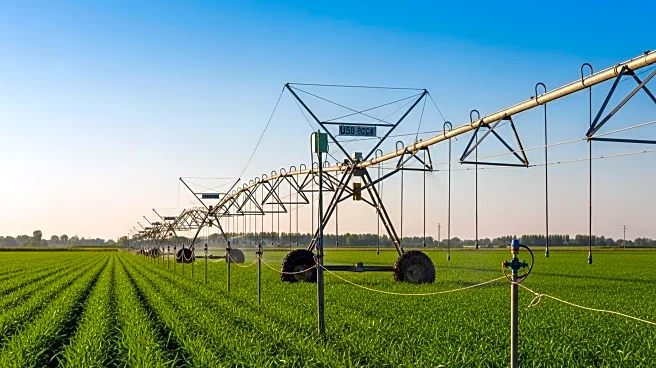What's Happening?
Archaeologists are studying the aftermath of the Toba supereruption, which occurred 74,000 years ago, to understand how humans survived this catastrophic event. The eruption, originating from a volcano in present-day Indonesia, was one of the largest in Earth's history, ejecting 672 cubic miles of volcanic ash and causing global cooling. Researchers are examining tephra and cryptotephra layers, which are volcanic materials, to trace the impact of the eruption on human populations. Evidence from archaeological sites in South Africa and Ethiopia suggests that humans not only survived but adapted by developing new technologies and strategies, such as bow-and-arrow technology and exploiting seasonal rivers for fishing.
Why It's Important?
The study of the Toba supereruption provides insights into human resilience and adaptability in the face of natural disasters. Understanding how ancient populations coped with such events can inform current disaster preparedness strategies. The findings challenge the Toba catastrophe hypothesis, which suggested a drastic reduction in human population due to the eruption. Instead, evidence indicates that humans were able to thrive and innovate, highlighting the importance of adaptability in survival. This research contributes to broader discussions on human evolution and the factors that have historically influenced population dynamics.
What's Next?
Future research will continue to explore the extent of the Toba eruption's impact on global human populations. Scientists aim to gather more data from archaeological, environmental, and climate records to refine their understanding of the conditions that facilitated human survival. This ongoing investigation may lead to new insights into the genetic bottleneck theory and the role of natural disasters in shaping human history. Additionally, modern programs like the USGS Volcanic Hazards Program are leveraging these historical lessons to enhance current volcanic monitoring and disaster preparedness efforts.
Beyond the Headlines
The study of ancient volcanic eruptions like Toba offers a unique perspective on human adaptability and resilience. It underscores the importance of technological innovation and environmental resourcefulness in overcoming challenges. These findings may influence contemporary approaches to disaster management and climate change adaptation, emphasizing the need for flexible and innovative solutions in the face of global threats.












